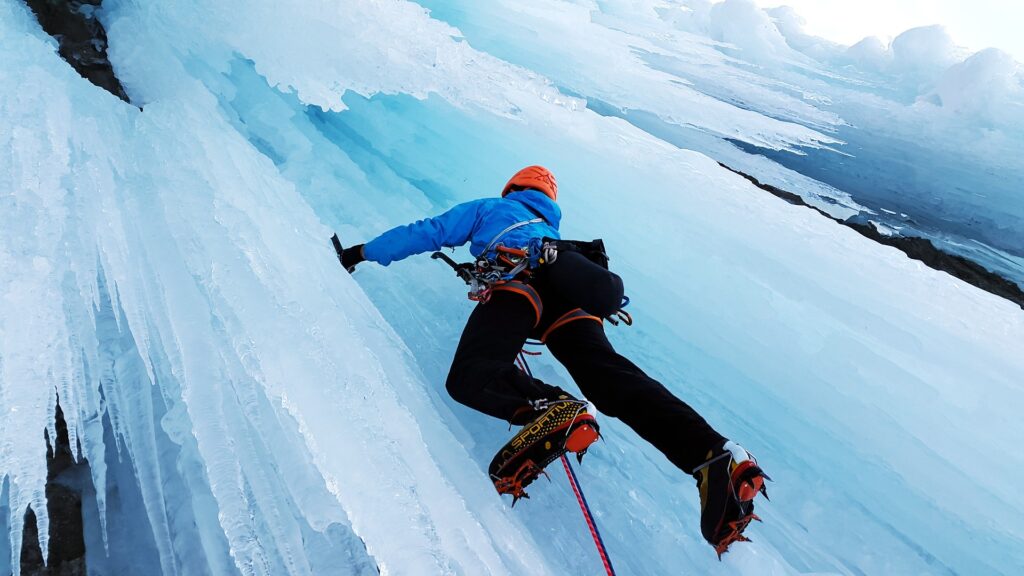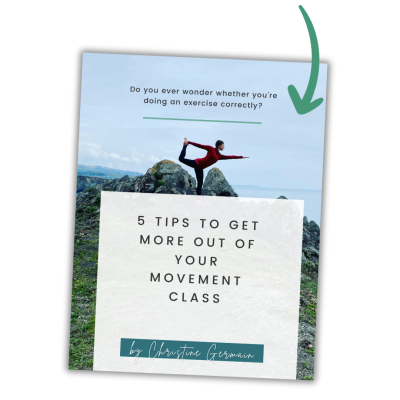I was Initiated to Ice Climbing last Winter!

Halfway through the first climb, I didn’t know if I was going to be able to make it to the top. I did get to the top, but I was completely exhausted!
I’ve done indoor wall climbing in the past, as well as circus arts on trapeze and rope, but ice climbing was totally new to me.
It was a two-hour class, and already after the first climb, I wondered how I was going to do the other climbs?
However, I teach movement. I know that it’s not all about muscle strength. There is the mental preparation, the nervous system, the fear to manage, etc.
The teacher told me, “The first climb is always the most difficult.”
I then remembered my first circus rope climb.
In fact, when you learn something new, you use a lot more effort than necessary. We have not yet developed the awareness necessary for this movement, and we have not yet distinguished the nuances from one position to another.
It’s even worse when fear gets involved—being afraid of falling or getting hurt, for example.
In circus, my teacher called the beginner’s effort the “death grip.” After all, we were holding on as if our life depended on it. Then, we gained self-confidence.
As we feel more at ease and fear fades, we slowly get rid of superfluous efforts. The “parasitic” muscles that engage out of habit and inhibit the efficiency of movement will slowly let go (and yes, this can take some time, but you can train this way).
It’s a bit like minimalism for movement. That doesn’t mean everything has to be easy and effortless. It simply means that you learn to use the appropriate level of effort for a given action.
For example, if you pick up a pencil from the ground and use the same effort as if you were lifting a 10lbs bag of rice, you are wasting your energy, aren’t you?
This is why just working on strengthening and stretching remains unsatisfying when we want to improve our quality of life and move better, with more ease and efficiency.
Whether it’s climbing, biking, dancing, or simply walking, the question isn’t how to do more or work harder. The questions to ask are “Where can I let go? Where can I stop wasting energy?”
So on your next workout or activity, have fun, and remember—if you find it all seems difficult, locate the parasitic muscles. See how you can get the job done without them, and enjoy the feeling of moving efficiently.
Train smarter, not harder!
This is what the classes of the Feldenkrais Method® are for! And even my Pilates class have a Feldenkrais twist!
See you in class!
(if you haven’t already, sign up to my newsletter to know when my next online class will be)
Photo Credits: Pixabay


